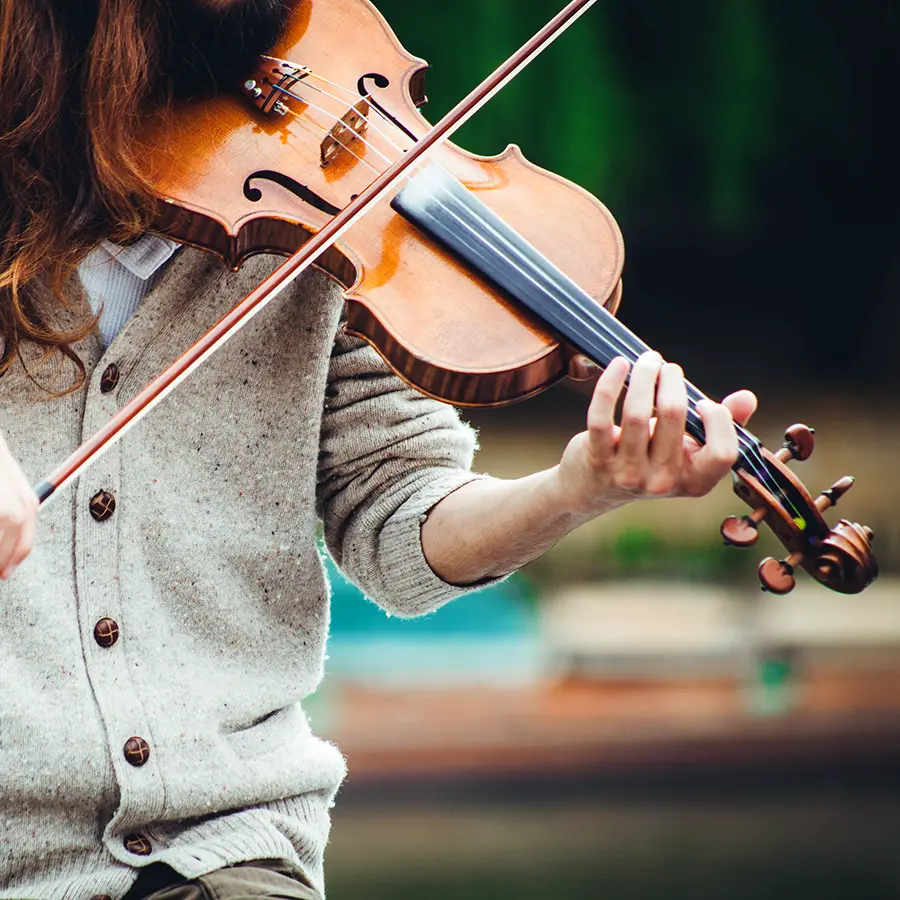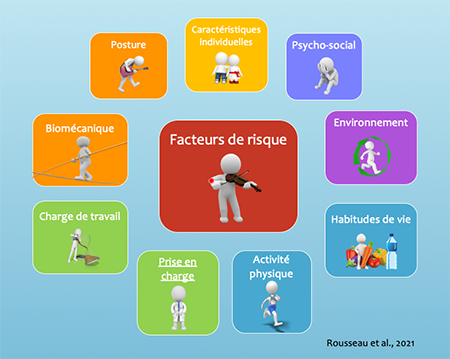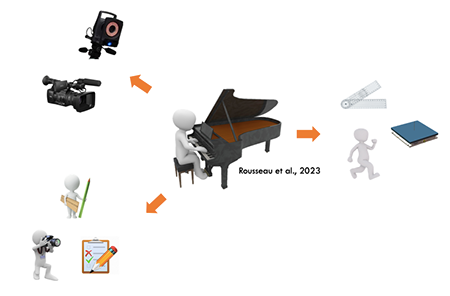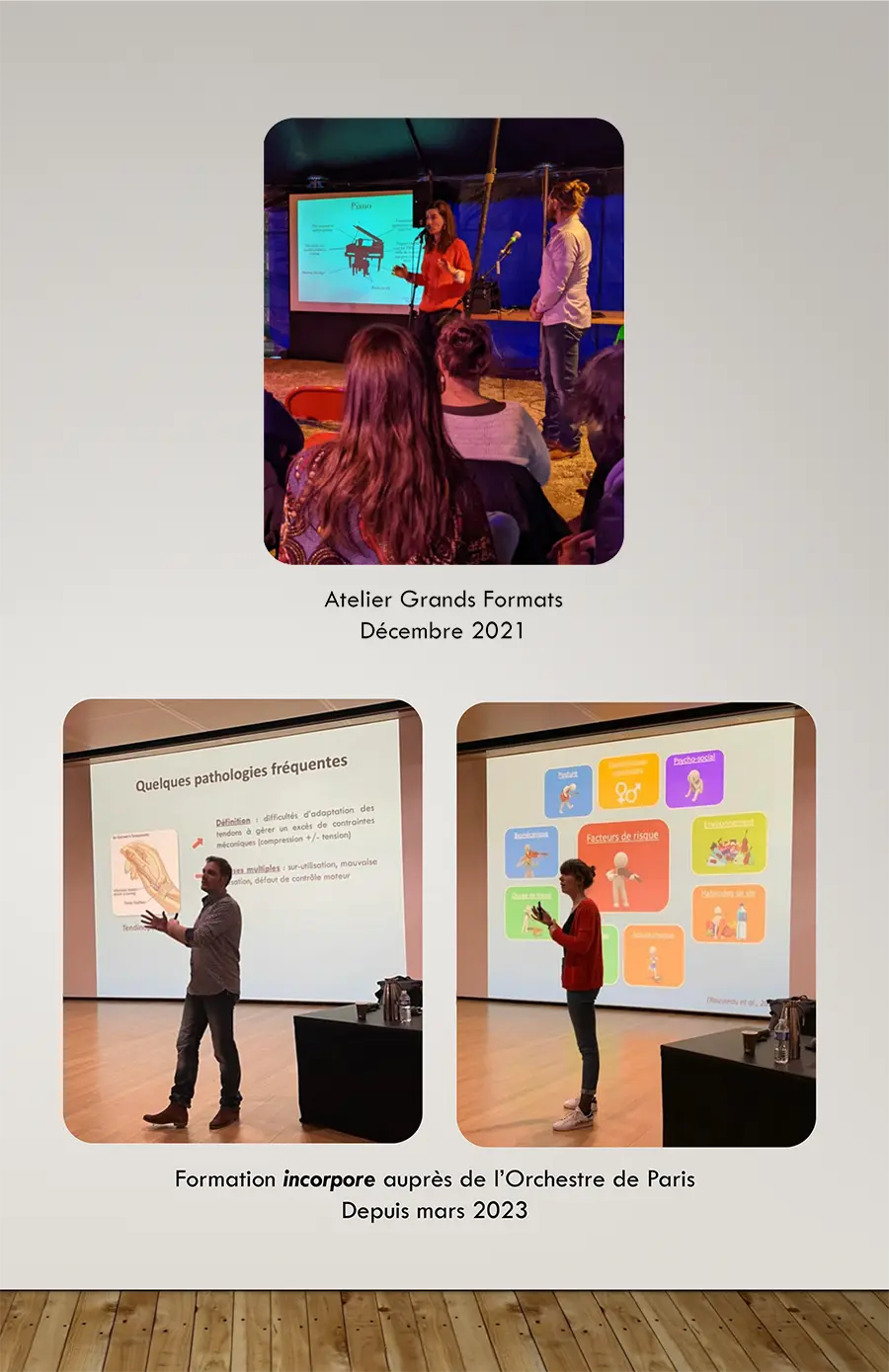Focus on our teacher : Céleste ROUSSEAU
The CEERRF sets up a hot news every month, it is a focus on its teachers, their expertise or one of their works which are shared here and brought to your attention.

A licensed physiotherapist since 2016, Céleste Rousseau immediately specialized in treating musician-related pathologies, be it professionals, students, or enthusiasts. Her unique focus on this specific field and her passion for research led her to pursue further education. She completed her Master’s in Ergonomics (CNAM Paris) and her MSc in STAPS (Université Paris-Saclay) while also practicing independently at the Clinique du Musicien in Paris.
Following a research internship in Australia with Prof. Bronwen Ackermann, she began her Ph.D. in the United Kingdom in September 2018, titled “Prevention of Musculoskeletal Disorders in Orchestra Musicians” at Liverpool John Moores University, in collaboration with the Royal Liverpool Philharmonic Orchestra, funded by Help Musicians UK. Successfully defended in April 2022, her Ph.D. resulted in two publications and numerous international conference presentations (in the United States, Europe, the United Kingdom, and virtually). It is rooted in a broader dynamic of pragmatic cultural change at the Royal Liverpool Philharmonic, pioneering in musicians’ health and well-being.
Since September 2020, Céleste embarked on parallel academic studies directly related to her practice, delving into philosophy to contemplate healthcare and the physiotherapy profession. Her Master’s thesis, supervised by Prof. Barbara Stiegler (Université Bordeaux Montaigne), explored the foundations of evidence-based practice and its clinical complexity. Her ongoing philosophical research centers on disease objectification and the social determinants often overlooked in healthcare.
Céleste supervises theses in various IFMKs (French Institutes of Physiotherapy), teaches subjects such as musician physiotherapy, research methods (with a qualitative approach emphasis), research ethics, the normal and pathological, and the construction of scientific knowledge in physiotherapy. She occasionally provides in-home care for musicians and engages with orchestras and conservatories as part of the “incorpore” duo with Sébastien MARTIN.
Musicians’ Physiotherapy – A Comprehensive Approach
While the potential risks of playing a musical instrument might not be immediately evident to concertgoers, the practice is not without its hazards. Since the days of Ramazzini, a pioneer in occupational medicine, research has made significant strides in understanding these risks.
In 1998, Zaza et al. defined musculoskeletal disorders as “pain, weakness, loss of control, numbness, tingling, or any other symptom that interferes with a musician’s ability to perform at their accustomed level.” These disorders are prevalent among musicians (Silva et al., 2015) and can jeopardize their employability and careers, depending on the severity of the condition.
Effectively addressing musicians’ health requires fundamental knowledge of music, but more importantly, an understanding of musicians’ specificities, including the instrument played, professional status, repertoire, and instrumental history.
This article is structured as follows :
- Describing the risk factors for musician-specific pathologies
- Exploring the role of posture as a predisposing factor
- Presenting clinical practices for musicians

Risk Factors for Musician-Specific Pathologies

For my thesis, I addressed this issue by reviewing the literature without formalizing the process. I then compared these findings with the opinions of musicians (specifically, members of the Royal Liverpool Philharmonic Orchestra) regarding their health and insights from musician health experts, both in research and clinical contexts.
The final model consists of nine categories (Rousseau et al., 2021) :
Cf figure 1
Posture in Instrumental Musicians

In my thesis, with valuable assistance from Louna TAHA, a former CEERRF student whose thesis I supervised, I conducted a systematic literature review to understand how posture during instrumental playing was investigated and whether a genuine link existed between posture and pain.
This review encompassed twenty-seven studies (Rousseau et al., 2023), involving nearly 530 musicians. These studies utilized various methods for assessing posture, including 2D and 3D motion analysis, visual evaluation, and stabilometry. (Cf figure 2)
Here are three key takeaways from this review.
This paradox is noteworthy. While we increasingly acknowledge that “the best posture is the next one,” research on musicians often fails to reflect these advancements to the wider population. Therefore, exploring how we investigate posture may provide valuable insights into understanding instrumental performance and its potential effects on musicians’ physical and mental health.
Clinical Practice with Musicians
While my clinical practice initially moved away from private practice due to extensive research activities, I have gradually returned in recent months.
Firstly, individual musicians, mostly professionals, occasionally contact me to better understand their bodies and prevent musculoskeletal disorders (including functional dystonia) that may result from their instrumental practice. I visit them at their homes, making it more convenient for musicians who don’t need to transport their instruments. It also allows me to assess their work environment more effectively. When possible, I also visit their official workplaces, such as orchestras or their usual rehearsal venues.
Secondly, a recent professional development has led to the creation of “incorpore” with Sébastien MARTIN, my former thesis advisor (a physiotherapist, educator, and researcher). Through “incorpore,” we provide interventions for musicians, often in collaboration with organizations like Grands Formats (workshops examples) or l’French Association of Orchestras . Additionally, starting in the 2023 academic year, we will be part of the new Health Center at the Conservatoire à Rayonnement Régional de la Ville de Paris.
Through « incorpore », we aim to educate musicians on understanding their bodies and instrumental technique from biological, psychological, and social perspectives, drawing upon the latest scientific advancements whenever possible. We will also collaborate with « Kiné au TOP » to train physiotherapists interested in musician-related issues.
References :
Baadjou, V. A. E., Roussel, N. A., Verbunt, J. A. M. C. F., Smeets, R. J. E. M., & de Bie, R. A. (2016). Systematic review: risk factors for musculoskeletal disorders in musicians. Occupational Medicine, 66(8), 614-622.
Rousseau, C., Barton, G., Garden, P., & Baltzopoulos, V. (2021). Development of an injury prevention model for playing-related musculoskeletal disorders in orchestra musicians based on predisposing risk factors. International Journal of Industrial Ergonomics, 81, 103026.
Rousseau, C., Taha, L., Barton, G., Garden, P., & Baltzopoulos, V. (2023). Assessing posture while playing in musicians – A systematic review. Applied Ergonomics, 106, 103883.
Silva, A. G., Lã, F. M., & Afreixo, V. (2015). Pain prevalence in instrumental musicians: a systematic review. Med Probl Perform Art, 30(1), 8-19.
Zaza, C., Charles, C., & Muszynski, A. (1998). The meaning of playing-related musculoskeletal disorders to classical musicians. Soc Sci Med, 47(12), 2013-2023.
For more information about Céleste Rousseau : site internet – X (ex-Twitter) – LinkedIn – Instagram – Thèse.

